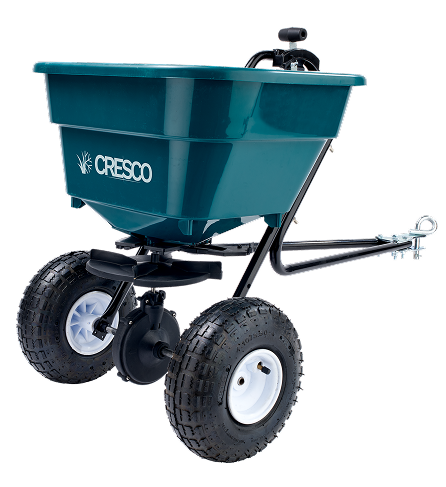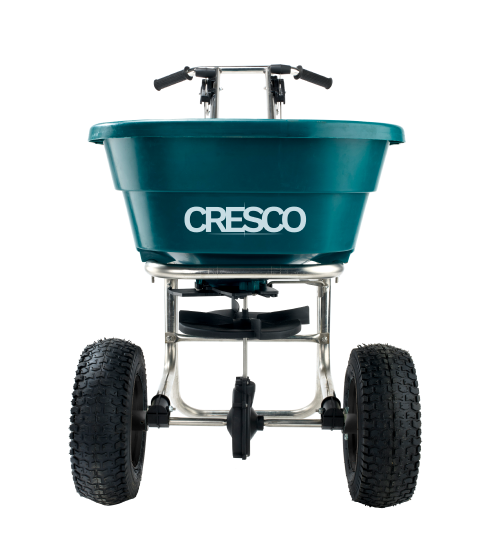Looking for the best time to fertilize your lawn? Unsure of whether to risk fertilizing before rain arrives, or if it’s best to leave it until after the downpour? Before mowing, or after cutting? And which months should you fertilize?
Applying fertilizer to a lawn makes you anxious as there are so many questions to answer before going ahead. And getting it right will mean the difference between brown, dead grass and a vibrant, emerald green swathe you can’t wait to enjoy.
Here you’ll find the best time to fertilize lawn throughout the seasons, how often, and what type of fertilizer to use. Use this backyard care guide to achieve great results for year round healthy grass and a tip top backyard this season.
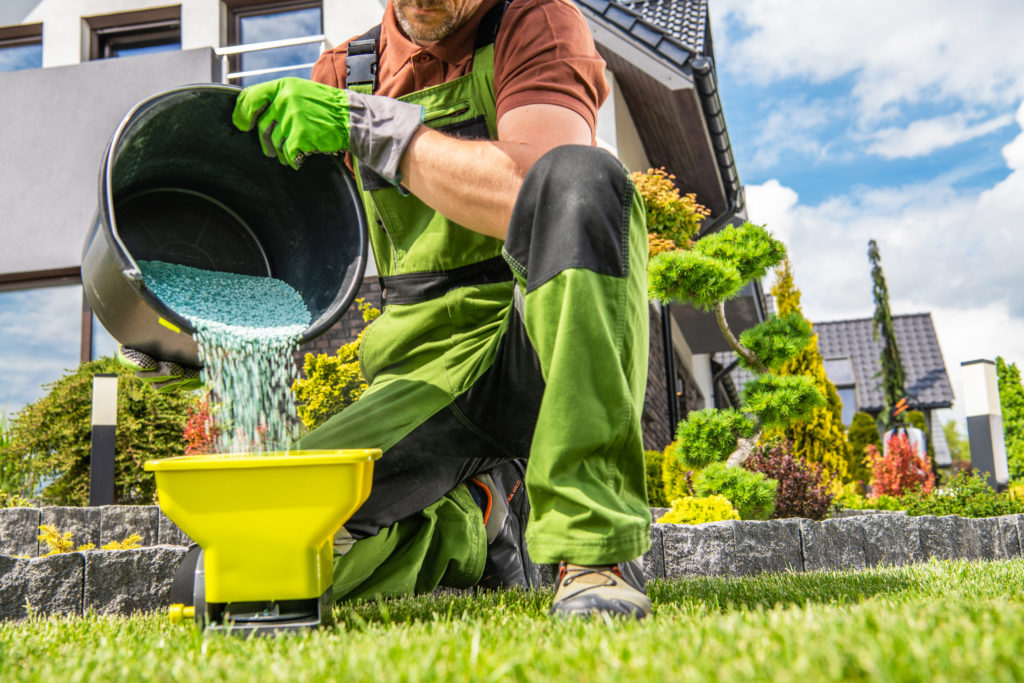
Why Use Fertilizer on Grass?
It’s a valid question. After all, sometimes grass can behave more like a weed than a plant that’s worth nurturing. Wrangling it into shape by using the best fertilizer will help you maintain your backyard more easily and you’ll soon be seeing the benefits. Furthermore, you’ll be seeing less long straggly crabgrass (couch grass), dandelions and daisies, and more of the bowling green grass you had in mind.
- Encourage Growth – In order to have healthy grass you need to feed it. Using fertilizer you’ll be supplying important nutrients to nourish your lawns, encouraging strong growth.
- Gain Strength – With strong growth (and the right fertilizer for the job) your grass will reward you with that vivid green we associate with a good lawn.
- Eliminate Disease – Healthy grass allows no room for disease to make an appearance.
- Crack Down on Weeds – Fertilizing your lawn helps suppress weeds. And what’s not to love about that!
Having established a need to fertilize your lawn, when is the best time to fertilize?
The Best Time to Fertilize Lawn Through The Seasons
Let’s take you through the year, as different seasons demand different nutrients. As the growing season progresses your lawn will have a variety of demanding challenges to overcome. From extreme weather conditions, to boisterous children playing soccer, throw in the odd summer garden party and you have a cocktail of tough tests to conquer.

Spring Lawn Fertilizer
As the soil begins to warm up, right around the time you first mow, you’ll want to apply fertilizer to boost energy in the grass. By using a nitrogen rich formula, lightly applied, you’ll be able to encourage root growth, and feed the lawn as it comes out of its winter slumber.
Think of fertilizing as a hibernating animal waking up from its winter sleep hungry. It’s the same concept. Your lawn will have used up all the nourishment in the soil and be in need of food.
However, like a starving person, don’t go overfeeding, as you run the risk of burning the grass. Recommended applications would be once for the season. More on what type of fertilizer later.
Summer Lawn Fertilizer
As you move into the summer season, you’ll want to think about a summer lawn fertilizer. This is the time of year when bugs are apt to invade. Not only destructive insects, but the increase in footfall, hot weather and drought play havoc with your backyard lawns.
Choose a slow release low nitrogen fertilizer to maintain healthy growth throughout the busy summer period. Being slow release, the fertilizer will gently deliver nutrients to tide the lawn into the fall.
Fall Lawn Fertilizer
As summer fades away, it is time to prepare your lawn for the upcoming cool winter weather. A good tidy up, scarify, weed and feed is essential to sustain your grass into next spring.
Choosing a fertilizer with a blend ratio of nitrogen to phosphorus to potassium 24 4-12 will help boost flagging nitrogen levels and add more potassium to the mix. Check out the explanation of what NPK is below.
Winter Lawn Care
Although we added in the season here, we don’t recommend any fertilizer use at this time. As the weather gets colder, so the grass stops growing, and effectively goes to sleep. The fall fertilizer application you used will be more than enough to over winter the grass, and help it survive the deep freeze and wet weather winter brings. Once winter is over, you will be able to get on with your spring fertilizer plans.
What’s the Best Fertilizer to Use?
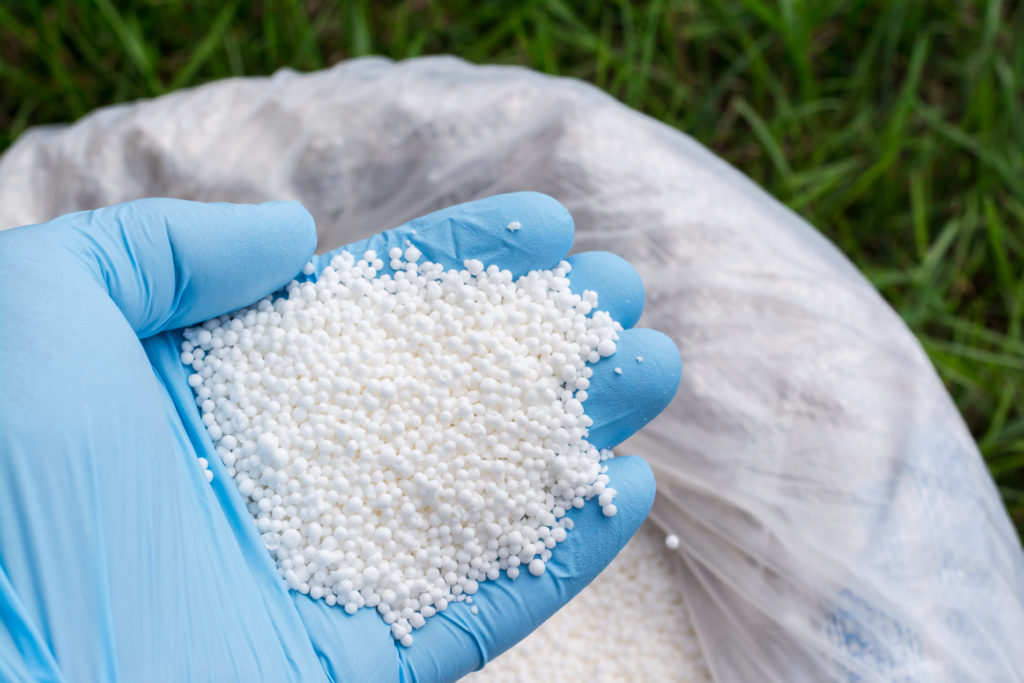
Whether it’s the heat and dryness of a summer’s day, or the harshest of winter frosts and snow, your lawn will thank you for any assistance you provide.
When choosing the best fertilizer to use, you’ll want to consider both the season and what nutrients your grass may require.
This is where many people break out in a cold sweat as the combination of numbers and letters takes you right back to school chemistry lessons! Never fear, we are here to help you translate.
In general, lawn fertilizer is made up of 3 components:
- Nitrogen (N) – Encourages the production of chlorophyll which is vital for photosynthesis, allowing grass (all plants) to absorb energy from light (sun). This in turn is crucial for healthy lawn growth. Needless to say nitrogen helps your grass grow greener and more densely.
- Phosphorus (P) – Helps grass develop strong roots and leaf blades. Phosphorus also helps form seeds and flowers. And because it creates strength in the plant it helps to fight off disease.
- Potassium (K) – Potassium helps with stress! In grass this means helping fight against heat, drought and cold. Blended together with nitrogen and phosphorus it creates the perfect trinity for growing lush green grass.
When you buy lawn fertilizer you will want to check out the balance of NPK on the package. It will show you the makeup of the blend using a series of numbers, such as 24 4-12, expressed as a percentage. The larger the number, the greater the amount of chemical in the fertilizer.
You may also find that fertilizer manufacturers products displayed on your garden center shelves will offer you specific season based lawn fertilizers to help you choose.
When is the Best Time to Apply Lawn Fertilizer?
Well, once you’ve decided on the season, you’ve bought your fertilizer and you are ready to start fertilizer spreading, you’ll want to know the best time to fertilize.
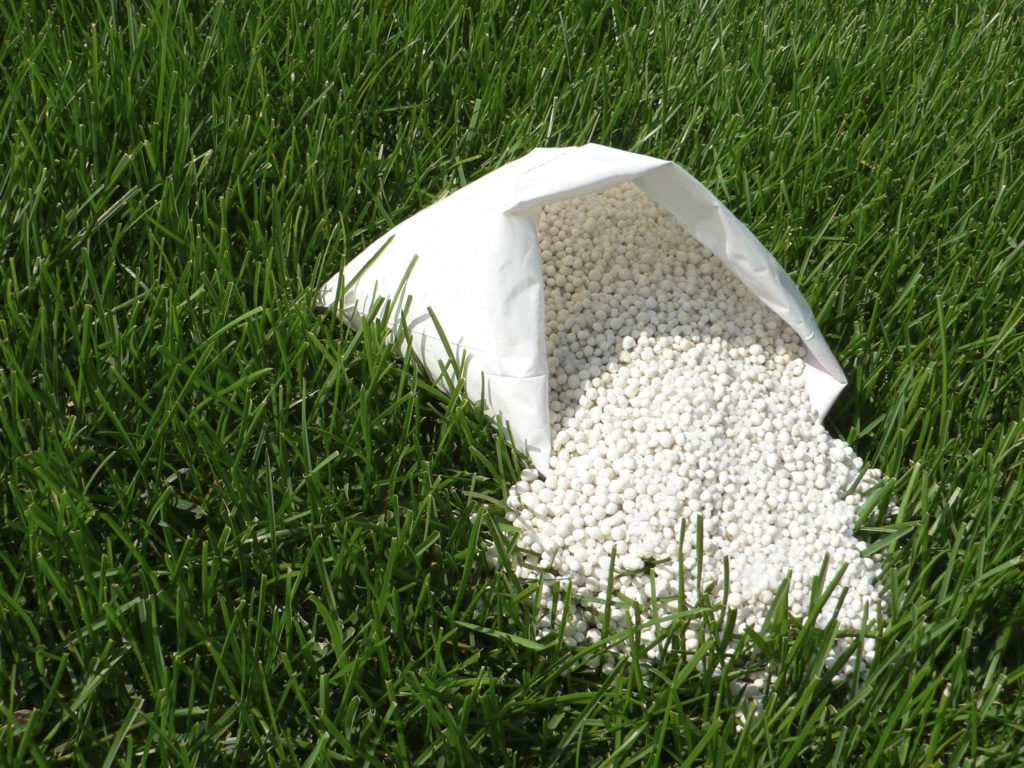
Should you fertilize before or after it rains?
Contrary to popular belief, you don’t want to apply fertilizer to your lawn prior to a heavy downpour of rain. It seems counter-intuitive, but heavy rain will wash your fertilizer off the blades of grass before they’ve had a chance to soak up the goodness.
Equally so, don’t apply fertilizer to grass when you are in drought conditions, as stressed grass and bone hard soil will only result in burning your lawn. Definitely not the look you are going for!
Of course, the grass does need water, or rain, and if it is light, continuous drizzle, this will help the uptake of nutrients and allow the soil to absorb both the damp and the nourishment.
Lawn Fertilizer Spreaders
If you have decided on a granular fertilizer, you’ll want to choose a fertilizer spreader for ease of application. Check out these fertilizer spreaders for the home owner from Cresco.
Not only will they take you through the fertilizing seasons, they will also help you through the ice melt and salt spreading of those cold winter months.
For those of you with a bigger backyard to cover, you may prefer to invest in a larger fertilizer spreader. The estate spreader gives you a wealth of features along with being able to use it for winter and summer spreading.
For more information on lawn spreaders, why not check out our article on Lawn Spreader Questions? How to choose (+Use) the Best
To Mow or Not to Mow, That is the Question
Choosing to mow your lawn before you fertilize helps pick up debris and dead grasses, exposes the soil, and allows fertilizer to more easily penetrate into the lawn.
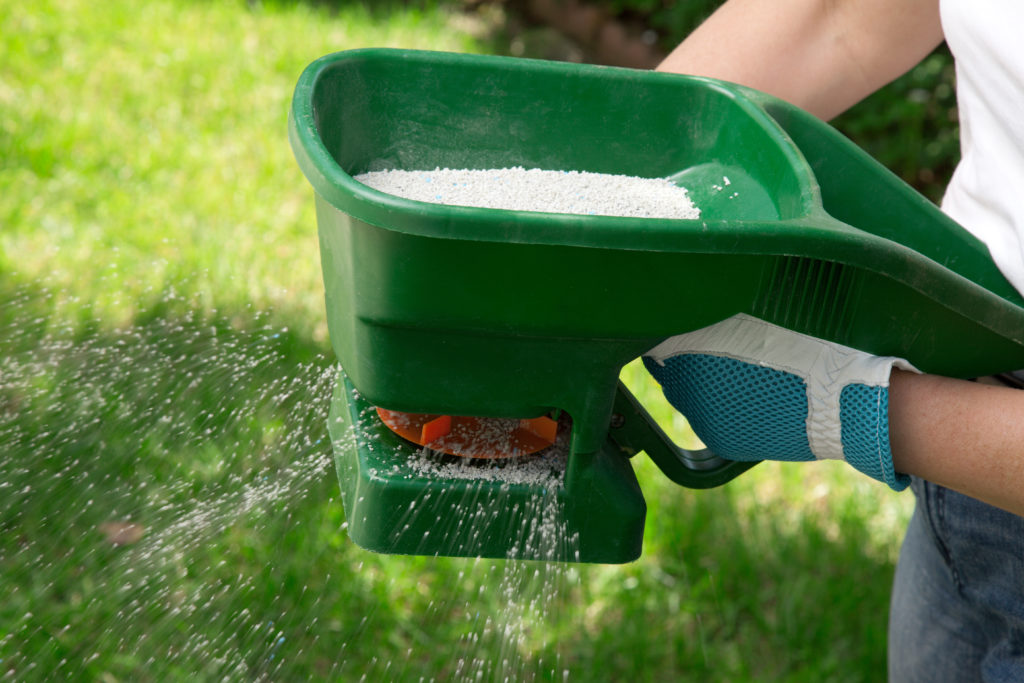
So, Is There a Best Time to Fertilize Lawn?
By now you will have gained an understanding of the best time to fertilize lawn. It’s not an
exact science, but if you follow the care guide, you’ll be able to put to one side the anxiety
common with using fertilizer on lawns.
Chose a good fertilizer for the time of year you are working on your backyard. Make certain of the prevailing weather conditions, and use a good fertilizer spreader and you won’t go wrong.
Why not check out our other articles keeping you updated with how best to care for your lawn and backyard?
